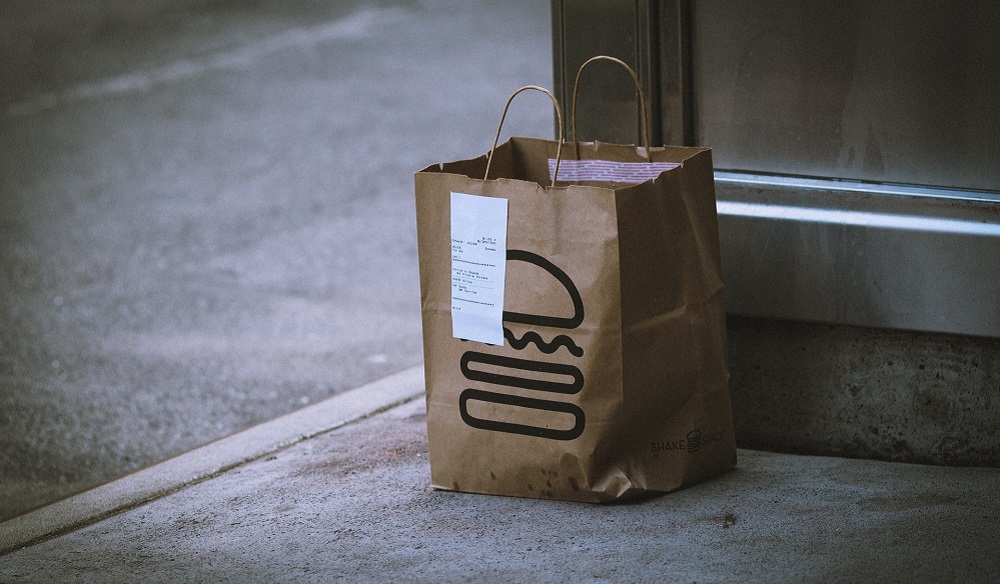
In an increasingly crowded food delivery marketplace, Gopuff is trying to carve out a niche by vertically integrating and positioning itself as the instant source for smaller-ticket convenience items. But how differentiated is the company’s model, and is there room for growth? Recent reports of layoffs, shift reductions, and fee increases indicate that the model may not be sustainable. In today’s Insight Flash, we dig into the drivers of Gopuff’s performance, including growth by market tenure, price per items trends, and items per basket.
Gopuff still has a long runway for growth before it catches up to the biggest players. Even in Philadelphia where it was founded in 2013, its share among the top five delivery brands was only 5.3% in February 2022. Share in Phoenix, a less mature market launched in 2016, was 2.2%. New York and London, where the company just began service last October, see Gopuff’s share at 0.6% and 0.4% respectively.
Market Share
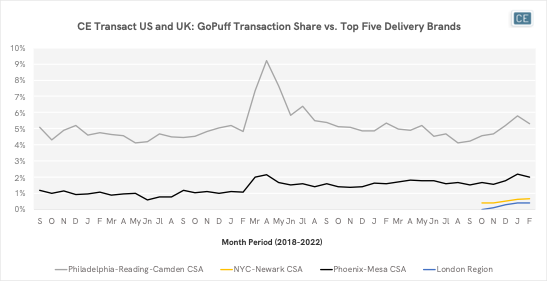
With Gopuff’s origins as a late-night snack delivery service, it’s not surprising that the average price per item has remained well under $5 from the beginning of 2018 through the end of 2021. However, the beginning of the COVID-19 pandemic raised that average price from $4.03 in 4Q19 to $4.81 in 2Q20. Although the price per item came down slightly at the beginning of 2021, increasingly popular categories such as alcohol, COVID tests, and prepared food from the company’s newly opened ghost kitchens may be contributors to that average price rising above $5 for the first time in 1Q22 quarter-to-date. As a comparison, grocery service Fresh Direct saw an average price per item of $5.17 in 4Q19 which has risen to $5.31 1Q22 QTD.
Price per Item
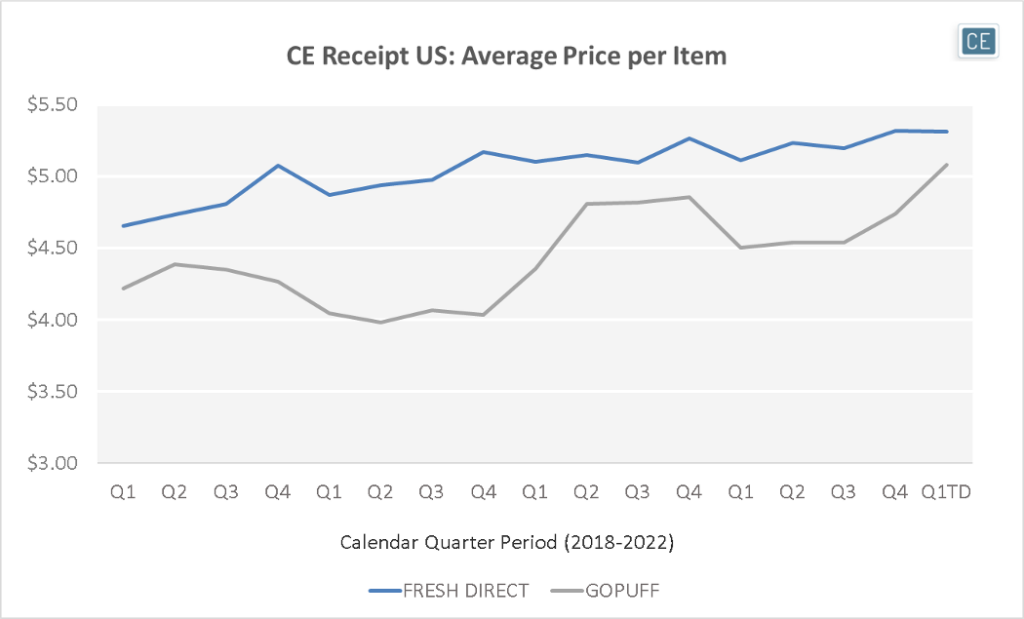
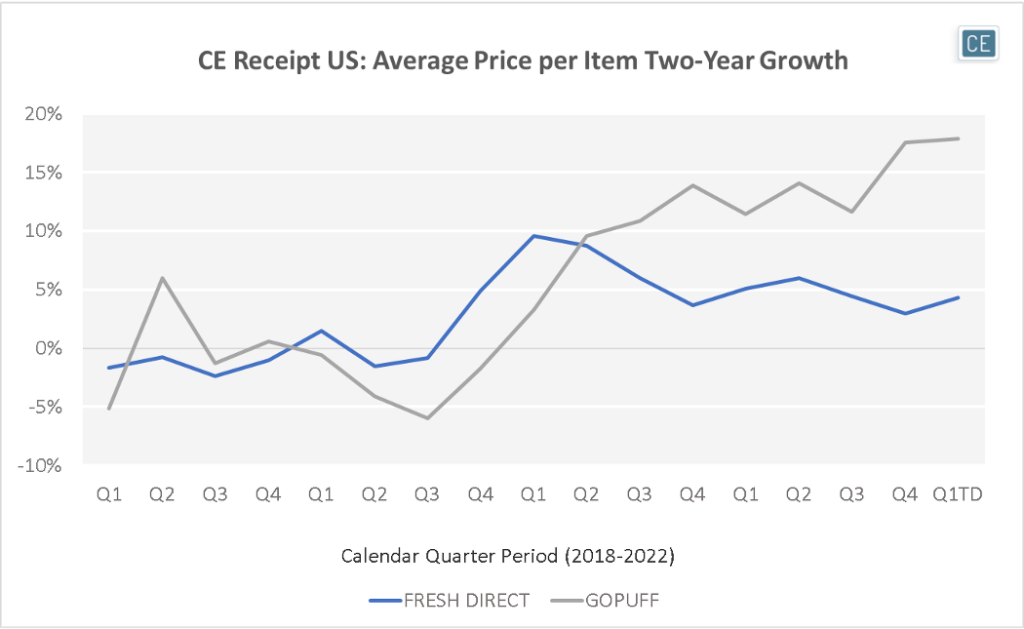
One major difference from Fresh Direct, however, lies in Gopuff’s small basket. With its late-night delivery and low order minimums, Gopuff has historically delivered an average basket of 5-6 items per transaction. Even at the peak of the pandemic when Fresh Direct orders surged to an average of 38 items per transaction, Gopuff orders contained an average of 5.4. It will be interesting to continue to use CE Receipt data to track how much the company relies on scaling price per item versus number of items in its basket for growth as it matures in more markets.
Items per Transaction
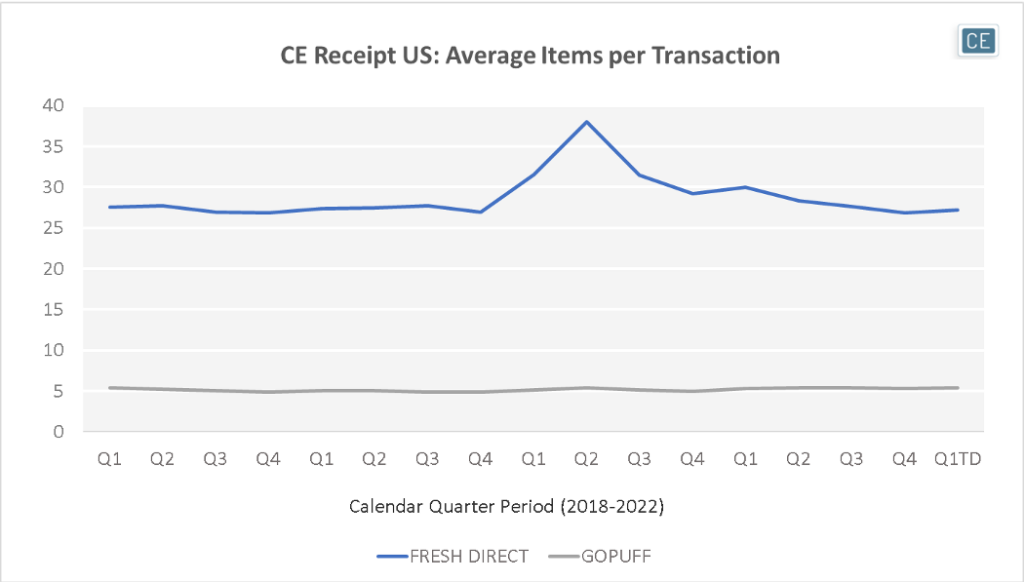
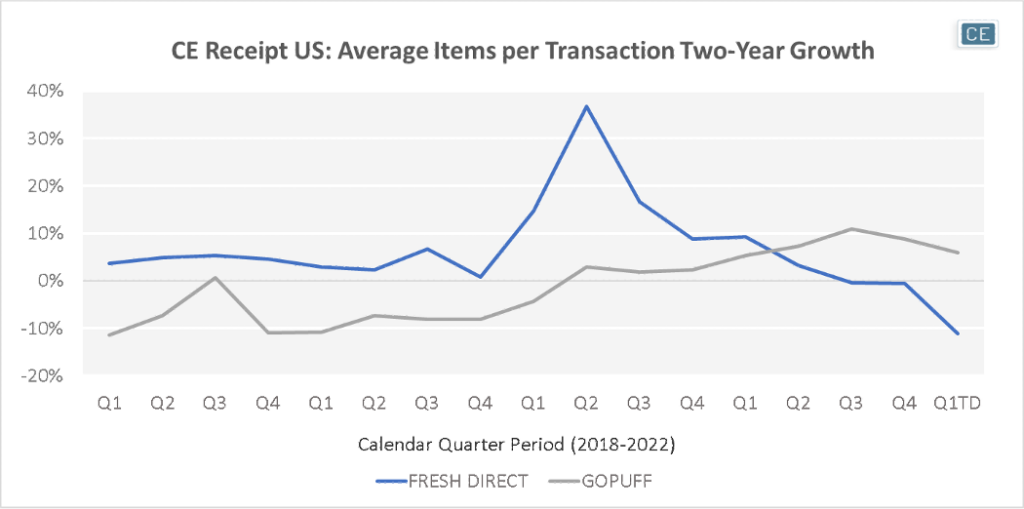
To learn more about the data behind this article and what Consumer Edge Research has to offer, visit www.consumer-edge.com.




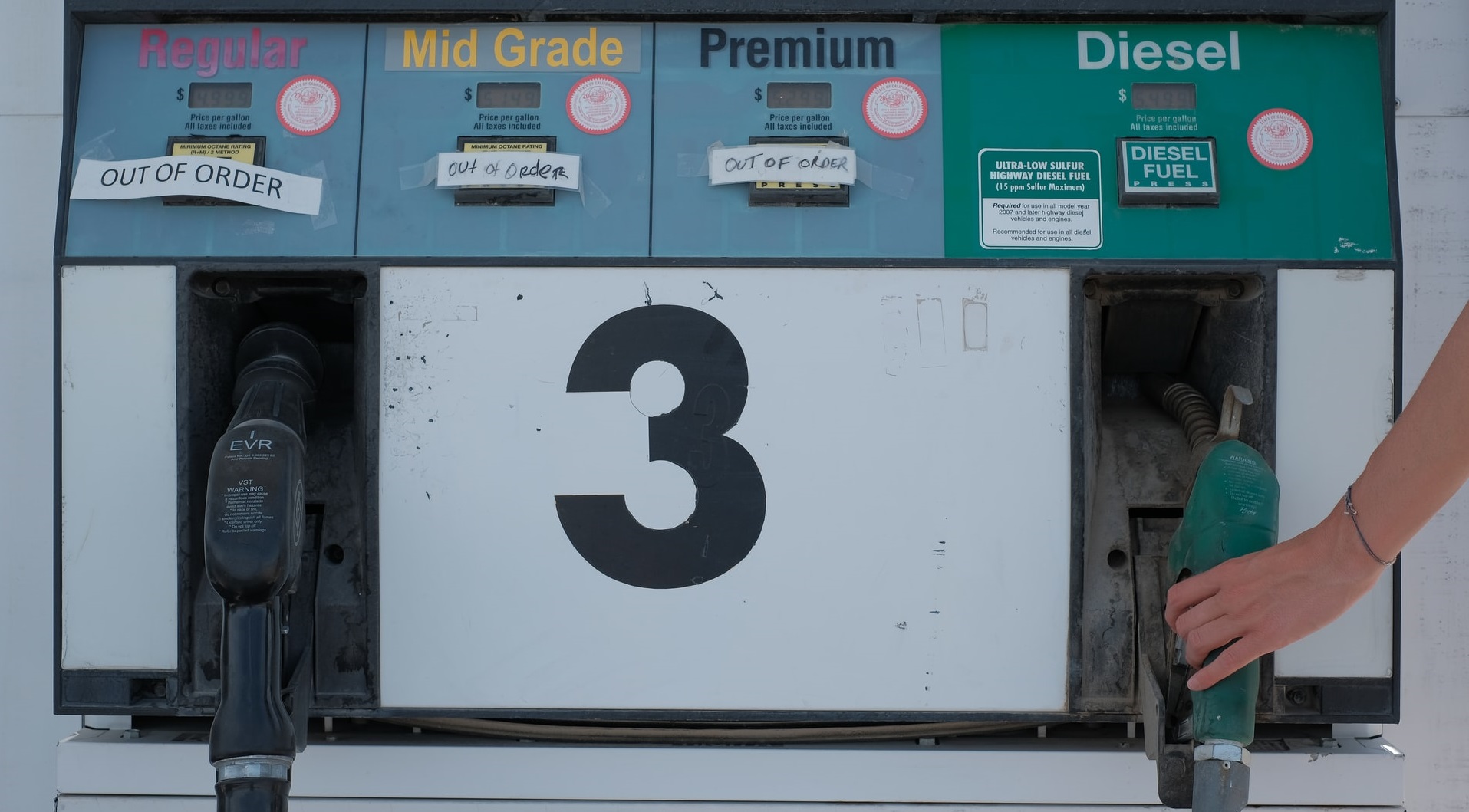

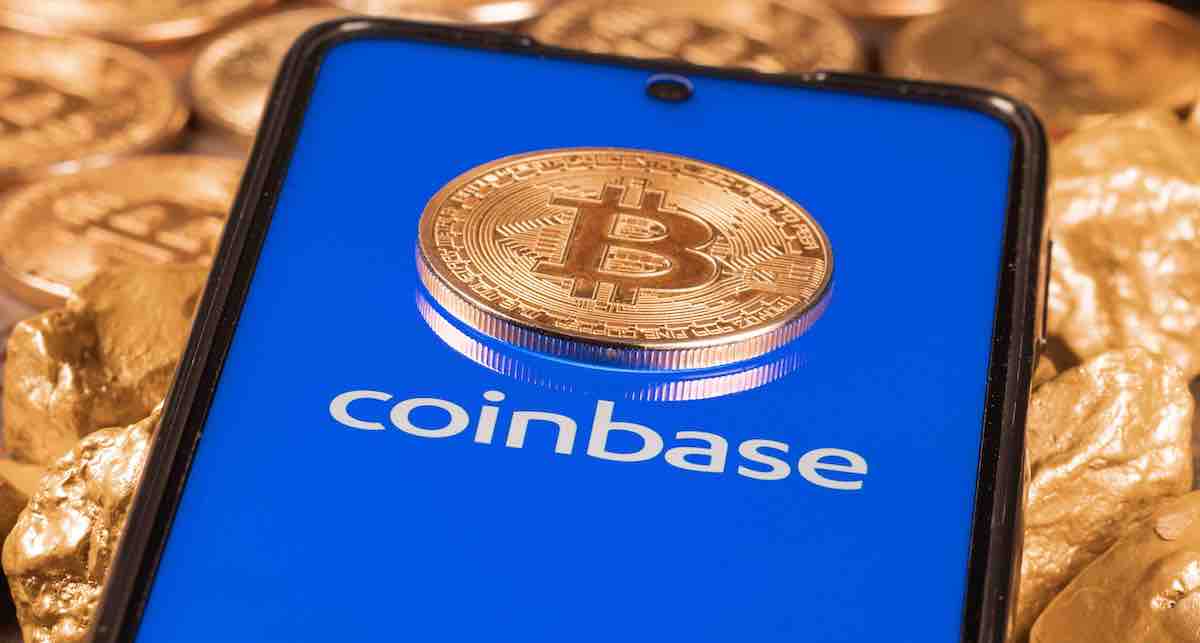
Sign up to receive our stories in your inbox.
Data is changing the speed of business. Investors, Corporations, and Governments are buying new, differentiated data to gain visibility make better decisions. Don't fall behind. Let us help.
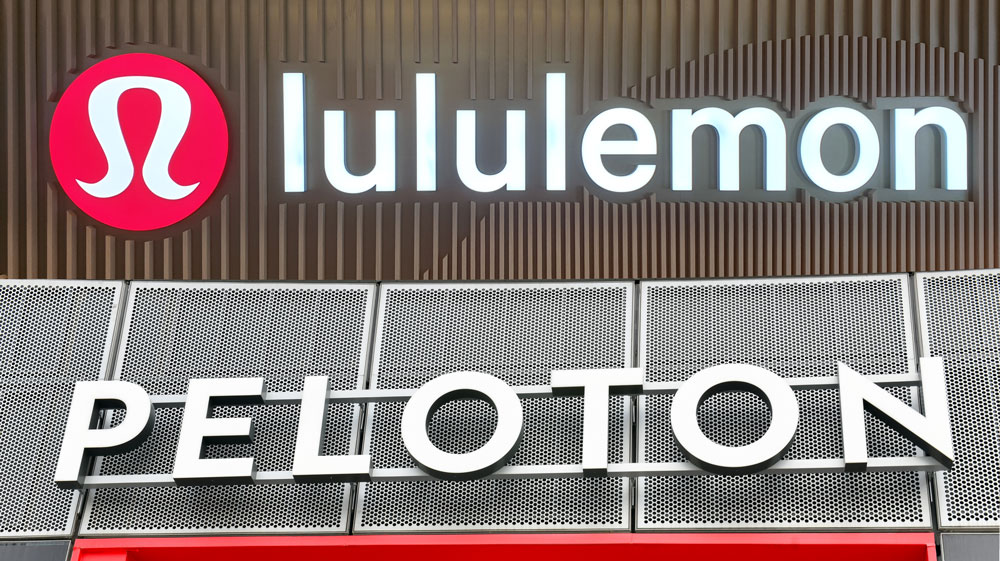


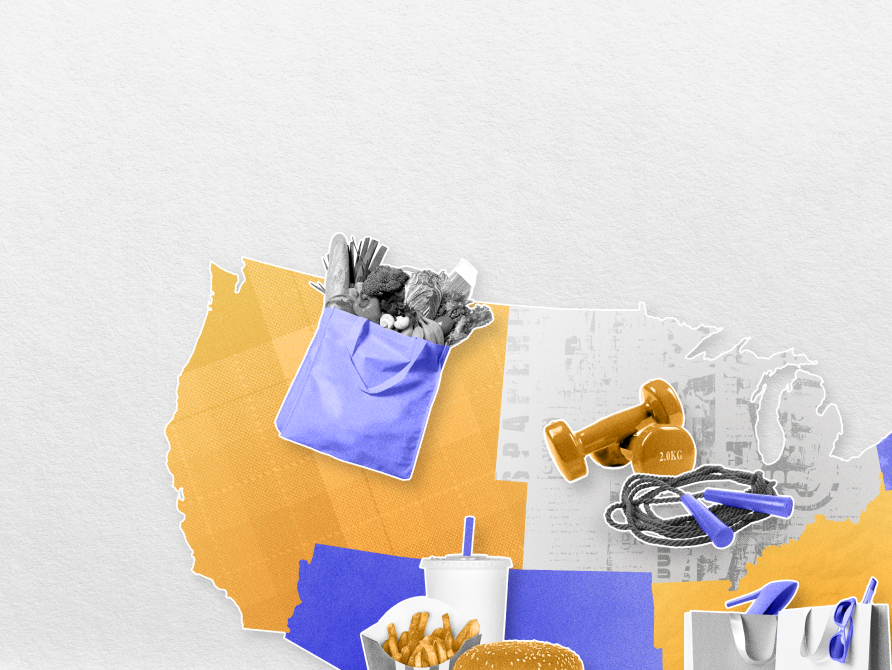

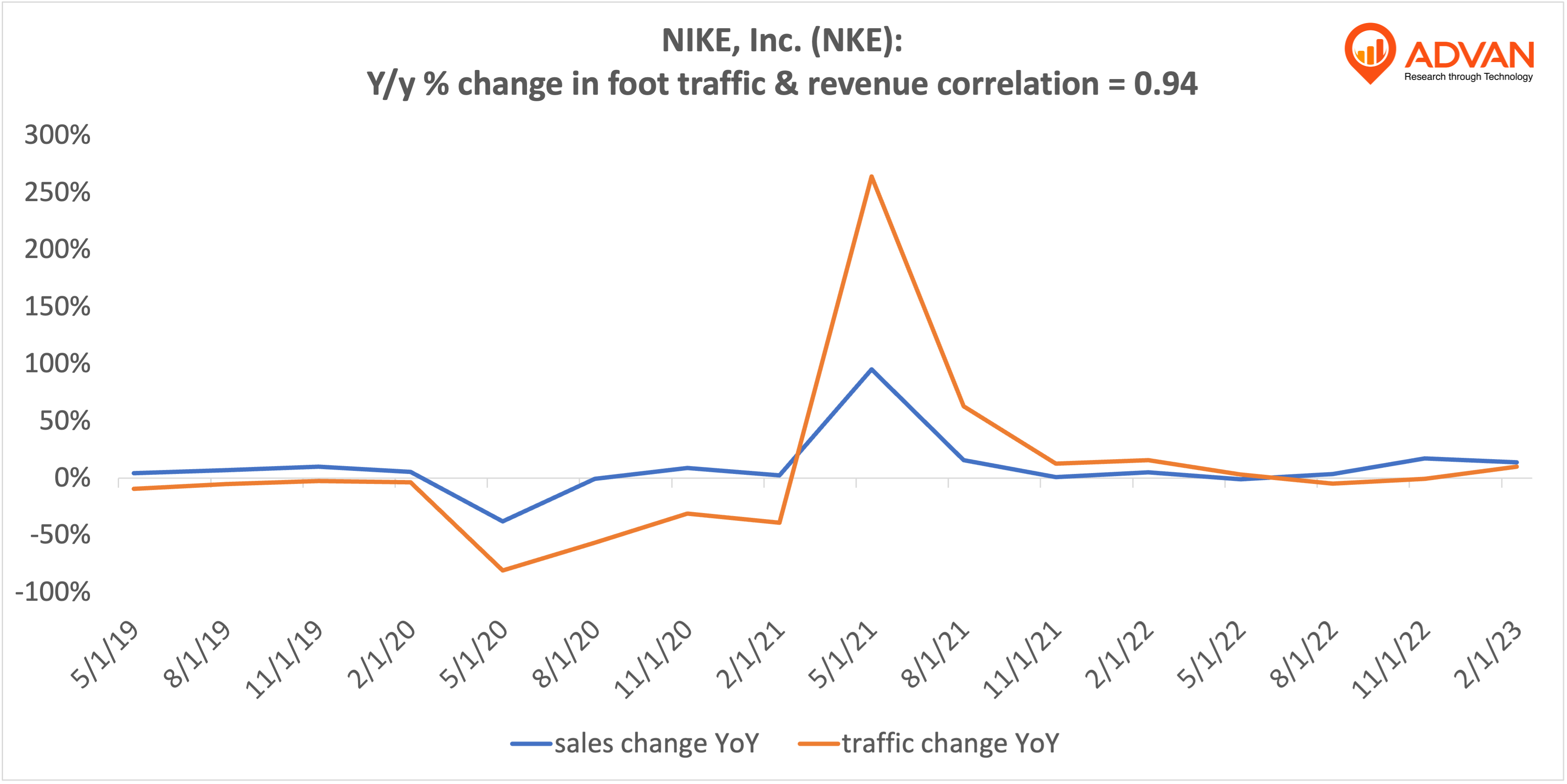







Sign up to receive our stories in your inbox.
Data is changing the speed of business. Investors, Corporations, and Governments are buying new, differentiated data to gain visibility make better decisions. Don't fall behind. Let us help.





